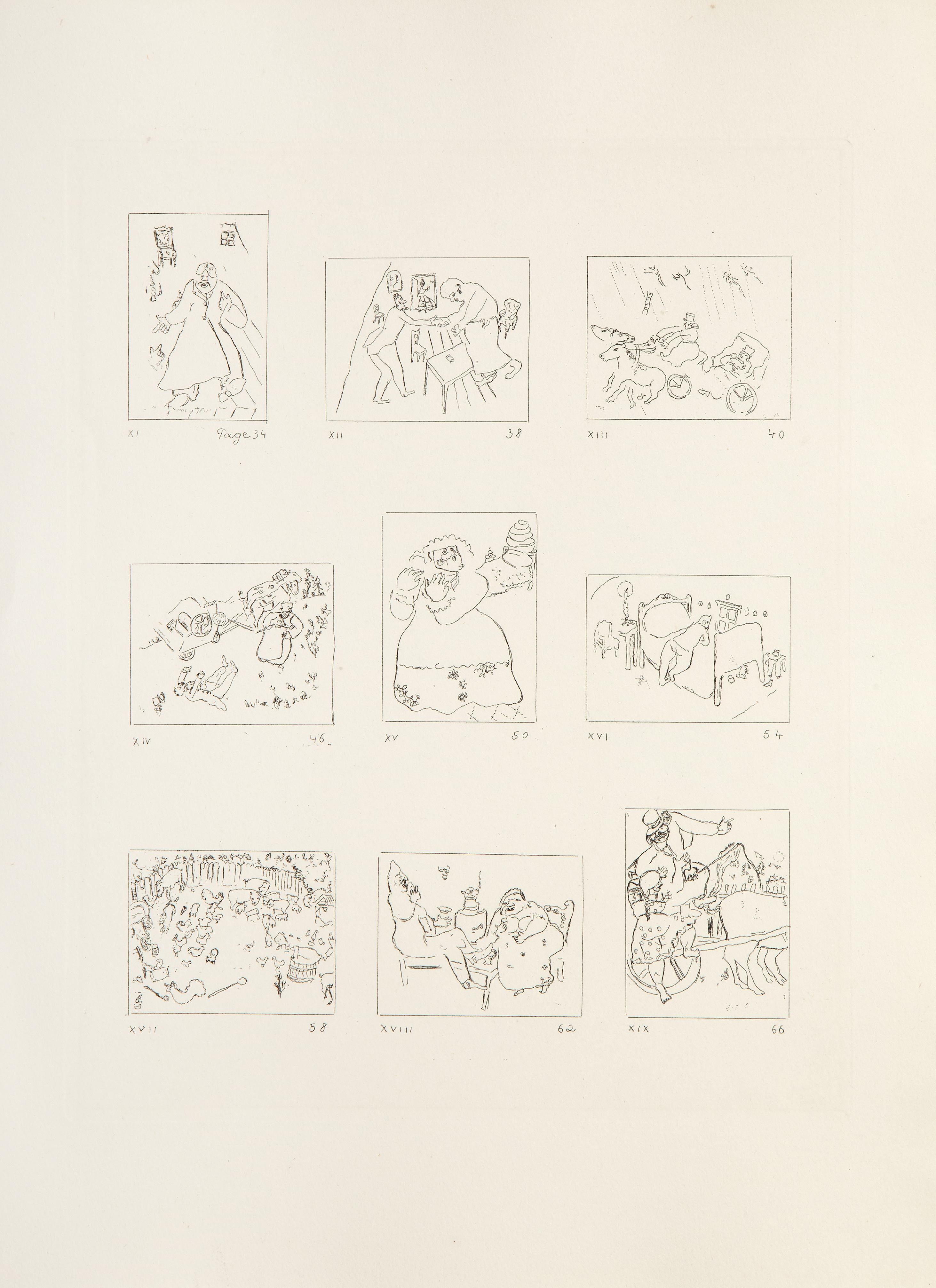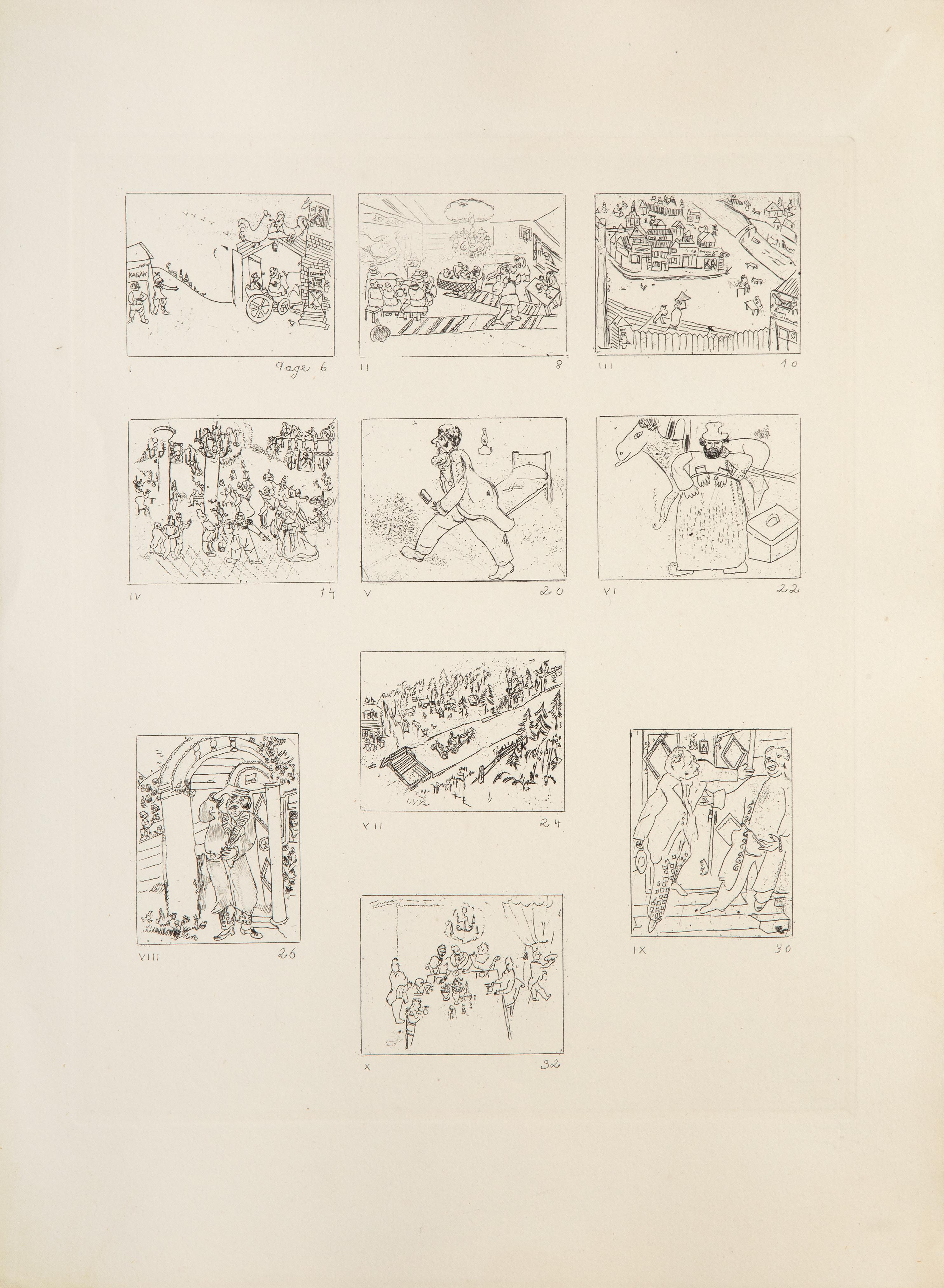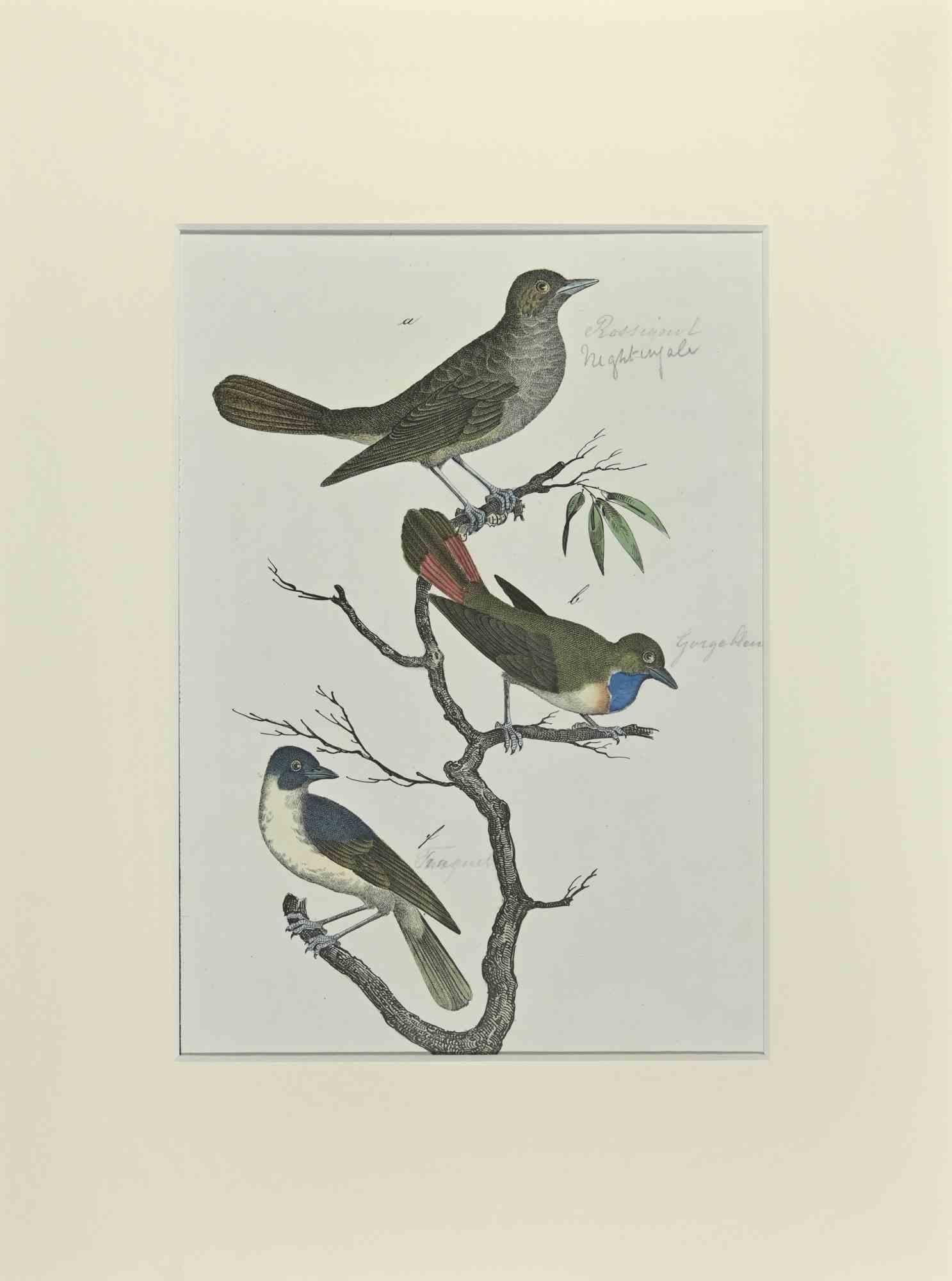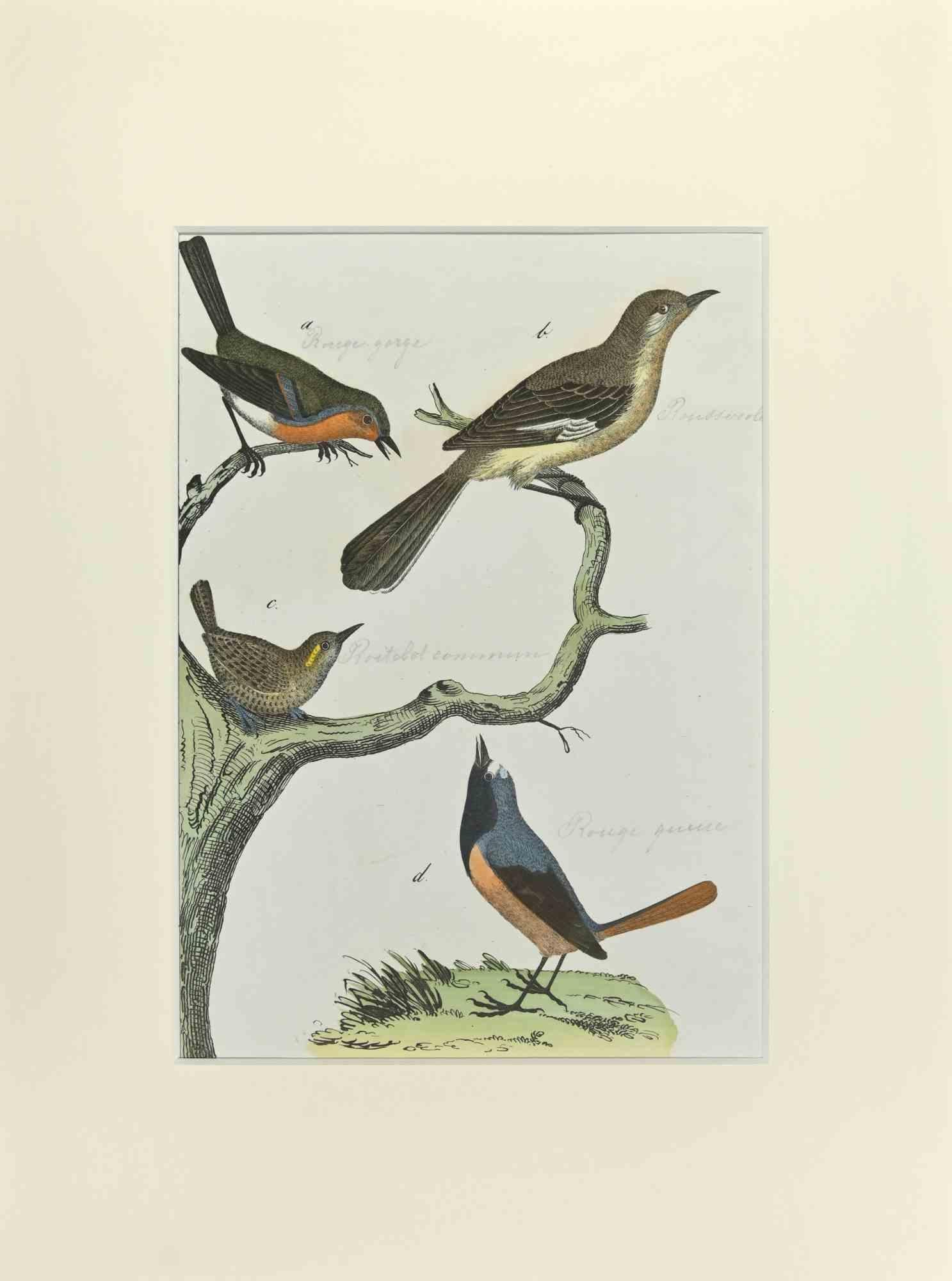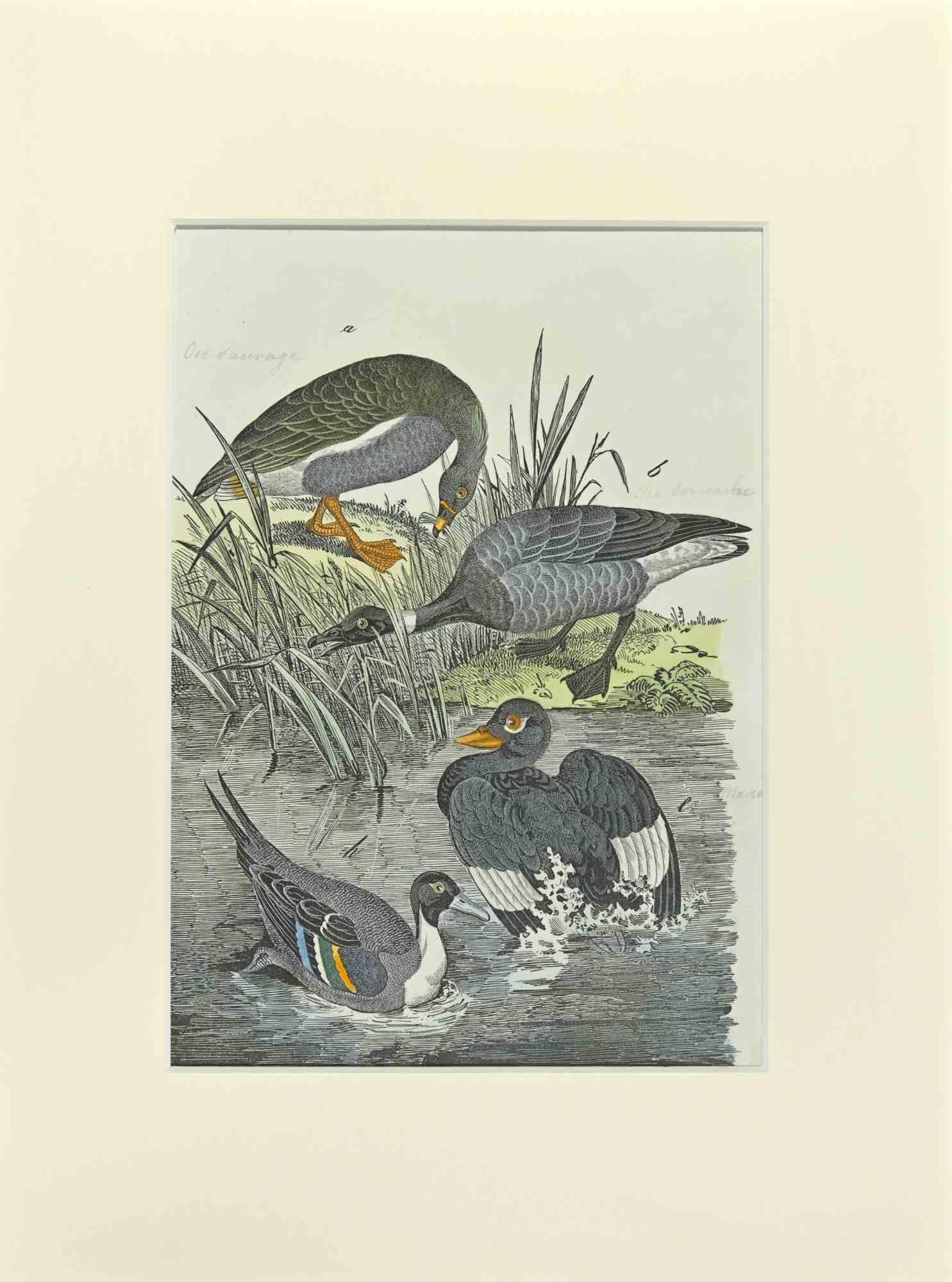Items Similar to Antinoo, Testa Colossale - Etching by Giovanni Folo - 1821
Want more images or videos?
Request additional images or videos from the seller
1 of 5
Giovanni FoloAntinoo, Testa Colossale - Etching by Giovanni Folo - 18211821
1821
About the Item
“Antinoo, Testa Colossale” (Antinoo, Colossal Head) is a beautiful black and white burin and etching on paper, realized by the Italian artist Giovanni Folo, after Agostino Tofanelli, as the inscriptions on plates on lower margins report “Agostino Tofanelli delineò./ Giovanni Folo incise Roma”.
Image Dimensions: 48 x 33.3 cm
This original print is numbered on plate in Roman numerals on higher margin: “Tom II. /Tav. XV" and is a plate from the series "Illustrazioni de'Monumenti scelti Borghesiani già esistenti nella Villa sul Pincio (..)date ora per la prima volta in luce dal cav. Gio. Gherardo De Rossi e da Stefano Piale sotto la guida di Vincenzo Feoli", by Ennio Quirino Visconti, published by Stamperia de Romanis in Rome, 1821.
This print shows a precious piece of the Borghese's collection, the marble bust of the legendary figure of Antinoo, a young Greek native of Bithynia, known for his sentimental and loving relationship with the Roman emperor Hadrian, who deified him after his premature death in rather mysterious circumstances. Today the name of Antinoo is associated with homosexuality and appeared in many literary and poetic works, including those by Oscar Wilde, Fernando Pessoa and Marguerite Yourcenar.
In excellent conditions with some light signs of the time, with some sporadic minor stains along the margins above all on the lower, this wonderful burin has preserved still today his fresh impression.
Illustrazioni de' Monumenti scelti Borghesiani
This collection in two volumes is a beautifully detailed catalog of classical sculptures collected by Prince Borghese (1730-1800) in his Villa on the Pincio. Ennio Quirino Visconti (1751 - 1818) wrote the texts that accompany the large branches depicting. To these writings, which were available by the son of the illustrious archaeologist, the publishers added only a few illustrations relating to some minor monument of which copper had already been engraved.
The engraved title-plate are signed by draughtsmen like Agostino Tofanelli, Stefano Tofanelli, Bernardino Nocchi, Domenico de Angelis or Teodoro Matteini, and by engravers Pietro Fontana Veneto, P. Vitali, Pietro Bettelini, Giovanni Folo Veneto, Giovanni Brunetti da Ravenna, Giovanni Ottaviani, Francesco Cecchini, Gio. Batta. Leonetti, Girolamo Carattoni, Domenico Cunego, Luigi Cunego, Alessandro Mochetti, Luigi Pizzi, Angelo Campanella or Giacomo Bossi.
The Volume I shows ancient full-length statues, of the Borghese warrior by Agasias (two plates), Greek gods and heroes and Roman famous historical figures; the last two plates represents antique Egyptian deities. There are plates representing ancient bas-reliefs, sarcophagi, of mythological subjects, the Borghese Vase, portrait busts, a vase on an altar, two statues of Amor; and two modern statues, by Bernini (the Apollo and Daphne, and the David).
«Très bel ouvrage» writes Brunet, «Grand ouvrage, le seul qui mérite, parmi ceux sur la villa Borgese, de figurer dans le chapitre aux Galeries et Collections» Vinet said, looking at this plate.
Giovanni Folo Veneto (Bassano, 1764– Rome1836)
The Italian engraver of the Neoclassic period, active in Italy, studied with Giulio Golini and G.B. Mengardi in Venice. In 1781 he moved to Rome to study with Giovanni Volpato, but later he followed the style of the Volpato's pupil, Raffaello Morghen, gaining fame for his engravings after famous paintings and sculptures of the most eminent masters, including Raphael, Michelangelo, Titian, Nicolas Poussin, Bertel Thorwaldsen, Antonio Canova and others. He became a member of the Accademia di San Luca in Rome,
Agostino Tofanelli (Lucca 1770 - Rome 1834)
Son of the engraver Andrea, Agostino Tofanelli studied with his father and his brother Stefano. In 1781 he settled in Rome to attend the courses of the Accademia del Nudo. Until the early years of the century it had a good name with a prestigious client as a draftsman and engraver; in 1807 he was appointed custodian of the Capitoline Museum, a position he held until his death. The first important assignments as a painter I saw in Rome in Palazzo Spada (1808) and in the renovation of the apartments of the Quirinale (Salon de Musique of the Empress, 1812). In 1813 he was appointed member of the Accademia di San Luca to follow the interventions in Palazzo Taverna , in the Palazzi Vaticani and in the chapel of the Quirinale. In Lucca, he was also commissioned by Maria Luisa di Borbone , for family portraits and works of biblical theme.
- Creator:Giovanni Folo
- Creation Year:1821
- Dimensions:Height: 23.51 in (59.7 cm)Width: 17.52 in (44.5 cm)Depth: 0.04 in (1 mm)
- Medium:
- Movement & Style:
- Period:
- Framing:Framing Options Available
- Condition:Insurance may be requested by customers as additional service, contact us for more information.
- Gallery Location:Roma, IT
- Reference Number:
About the Seller
4.9
Platinum Seller
These expertly vetted sellers are 1stDibs' most experienced sellers and are rated highest by our customers.
1stDibs seller since 2017
6,857 sales on 1stDibs
Typical response time: 3 hours
- ShippingRetrieving quote...Ships From: Grasse, France
- Return PolicyA return for this item may be initiated within 14 days of delivery.
More From This SellerView All
- Nightingale - Etching by Johann Friedrich Naumann - 1840Located in Roma, ITNightingale is a Etching hand colored realized by Gotthilf Heinrich von Schubert - Johann Friedrich Naumann, Illustration from Natural history of birds in pictures, published by Stut...Category
1840s Modern Figurative Prints
MaterialsEtching
- Condor - Etching by Johann Friedrich Naumann - 1840Located in Roma, ITCondor is an Etching hand colored realized by Gotthilf Heinrich von Schubert - Johann Friedrich Naumann, Illustration from Natural history of birds in pictures, published by Stuttgar...Category
1840s Modern Figurative Prints
MaterialsEtching
- Red Throttle - Etching by Johann Friedrich Naumann - 1840Located in Roma, ITRed Throttle is an Etching hand colored realized by Gotthilf Heinrich von Schubert - Johann Friedrich Naumann, Illustration from Natural history of birds in pictures, published by St...Category
1840s Modern Figurative Prints
MaterialsEtching
- Wild Goose - Etching by Johann Friedrich Naumann - 1840Located in Roma, ITWild Goose is an Etching hand colored realized by Gotthilf Heinrich von Schubert - Johann Friedrich Naumann, Illustration from Natural history of birds in pictures, published by Stut...Category
1840s Modern Figurative Prints
MaterialsEtching
- Heron and Stork - Etching by Johann Friedrich Naumann - 1840Located in Roma, ITHeron and Stork is an Etching hand colored realized by Gotthilf Heinrich von Schubert - Johann Friedrich Naumann, Illustration from Natural history of birds in pictures, published by...Category
1840s Modern Figurative Prints
MaterialsEtching
- Tourtorelle With Necklace - Etching by Johann Friedrich Naumann - 1840Located in Roma, ITTourtorelle With Necklace is an Etching hand colored realized by Gotthilf Heinrich von Schubert - Johann Friedrich Naumann, Illustration from Natural history of birds in pictures, pu...Category
1840s Modern Figurative Prints
MaterialsEtching
You May Also Like
- Les Ames Mortes Vignette Plate 1, Modern Etching by Marc ChagallBy Marc ChagallLocated in Long Island City, NYMarc Chagall, Russian (1887 - 1985) - Les Ames Mortes Vignette Plate 1. Year: 1948, Medium: Etching on MBM, Image Size: 10 x 7.75 inches, Size: 15 x 11 in. (38.1 x 27.94 cm), Referen...Category
1940s Modern Figurative Prints
MaterialsEtching
- Les Ames Mortes Vignette Plate 2, Modern Etching by Marc ChagallBy Marc ChagallLocated in Long Island City, NYMarc Chagall, Russian (1887 - 1985) - Les Ames Mortes Vignette Plate 2. Year: 1948, Medium: Etching on MBM, Image Size: 10 x 7.75 inches, Size: 15 x 11 in. (38.1 x 27.94 cm), Referen...Category
1940s Modern Figurative Prints
MaterialsEtching
- Dorian Gray at Opium Den from "The Picture of Dorian Gray" surreal portraitBy Jim DineLocated in New York, NYThis surreal etching portrait of Dorian Gray by Jim Dine in blue ink features the literary protagonist dressed in a white suit. His face is obscured by a mass of hair, tangles of which seem to grow from the sleeves, pant legs, and from beneath the jacket. Dine's notes are written on the image: at his feet reading "WHITE BOOTS" and "White Vinyl Suit" alongside the jacket. On the left edge of the image handwritten text reads "DORIAN GRAY AT OPIUM DEN". In Oscar Wilde's novel Dorian Gray keeps opium in an ornate box in his home, and frequents sites of consumption on the East side of London: “There were opium dens where one could buy oblivion, dens of horror where the memory of old sins could be destroyed by the madness of sins that were new”. An opium den is where Sybil's brother James discovers Dorian. The brother attempts to capture the man he believes is responsible for the death of his sister. Dorian flees to his home, ultimately slashing the portrait that has kept him young for so long. Etching by Jim Dine from one of his most important artist’s books – completely designed and illustrated by Dine. Study for the Rings on Dorian Gray’s Hand from “The Picture of Dorian Gray...Category
1960s Modern Figurative Prints
MaterialsEtching
- Victor Guadalajara, "Intersections", 2009, Woodcut 16x12inBy Victor GuadalajaraLocated in Miami, FLVictor Guadalajara (Mexican, 1965) 'Intersecciones', 2009 Woodcut and Aquatint 100.00 x 185 cm. (39.4 x 72.8 in.) Edition of 30 UnframedCategory
Early 2000s Modern Abstract Prints
MaterialsPaper, Ink, Engraving, Etching, Woodcut
- Alington in Wiltshire (The First Swallow).By Robin TannerLocated in Storrs, CTAlington in Wiltshire (The First Swallow). 1927. Etching. Garton 2.iv. 6 3/4 x 8 7/8 (sheet 10 1/2 x 13 1/2). Final state published by in an editon of 12 by Garton & Cooke in 1982 (Nicolson published an edition of 40 in 1927). In states iii and iv, the swallow of the title was removed. In state iv, the sky was re-etched and the cross-hatching was slightly finer. Signed in pencil. Garton writes, page 11: "The design was based on the Anglican chapel-of-ease is the farmyard of Bulisge at Allinston near Chippenham....The print was originally entitled The First Swallow, but the swallow was burnished out before the 1927 edition....Fifty years later new work was effected in the worn-out areas of the sky and distance to produce prints which, in his opinion, were better than those of the original edition." Robin Tanner was an English artist, etcher, and printmaker. He followed the visionary tradition of Samuel Palmer and English neo-romanticism. His etchings began following night-school classes at Goldsmiths College, London. He had been inspired by the major Samuel Palmer retrospective exhibition organized by Martin Hardie...Category
1920s Modern Landscape Prints
MaterialsEtching
- Twixt Dawn and DayBy Sir Frank ShortLocated in Storrs, CTTwixt Day and Dawn. 1919. Aquatint. Hardie catalog 165 state ii. Image 9 7/8 x 11 1/2 (sheet 13 9/16 x 16 7/8). A masterly inked impression produces subtle lighting variations throu...Category
Early 20th Century Modern Landscape Prints
MaterialsAquatint
Recently Viewed
View AllMore Ways To Browse
Etchings Of Vase
Art 1821
Emperor And Empress
Testa Di
Large Greek Statue
Brothers Statue
Altar Vase
Black Greek Bust
Venice Statue
The Last Empress
Large Bust Statue
Ancient Black Statue
Antique Roman Emperor Sculpture
Bust Of Roman Emperor
Roma Marble
Amor Sculpture
Bust Of David Sculpture
Antique Greek Vase Prints
